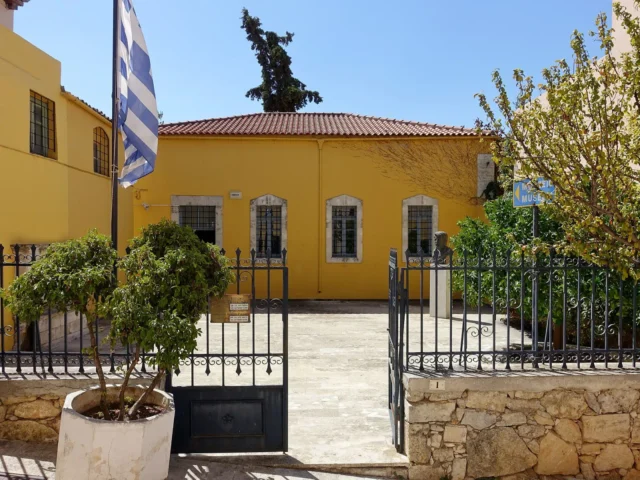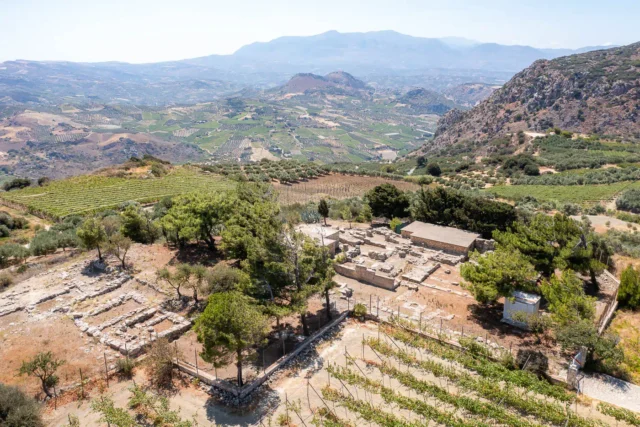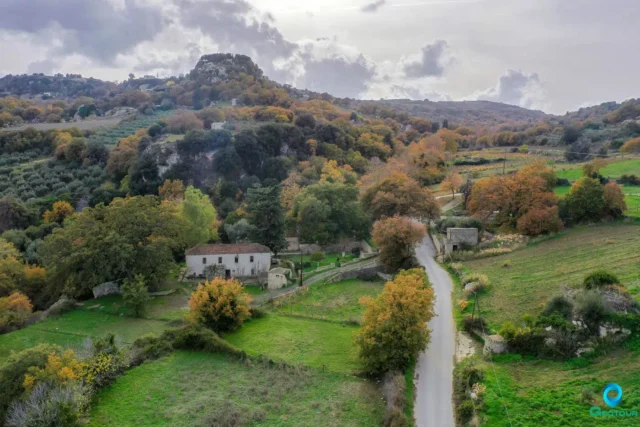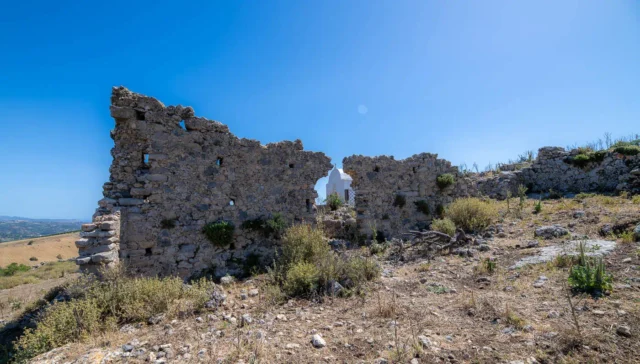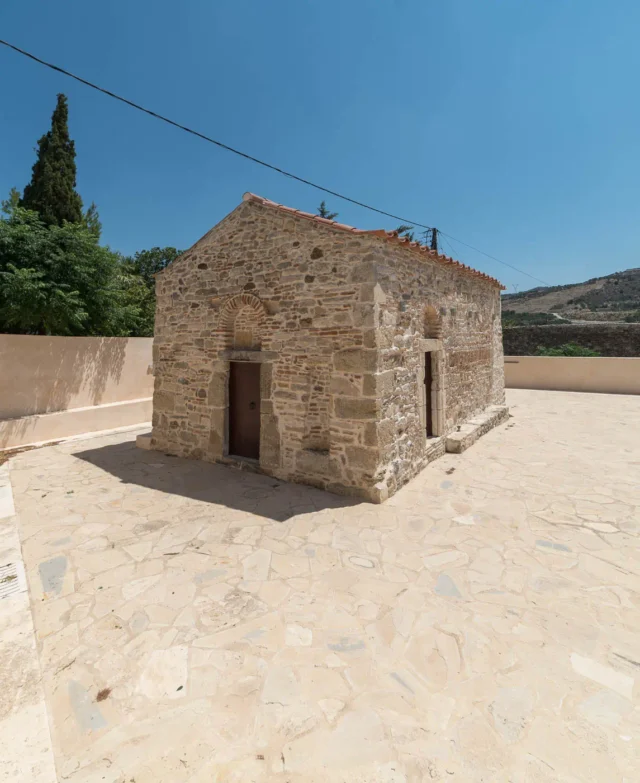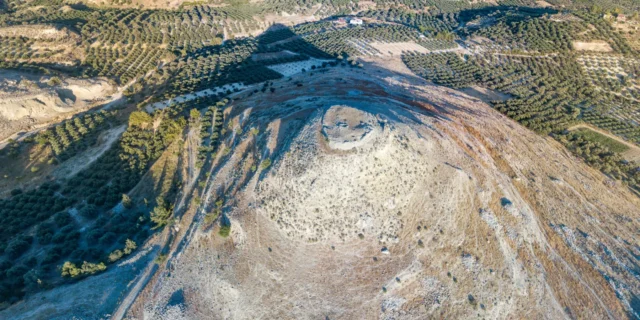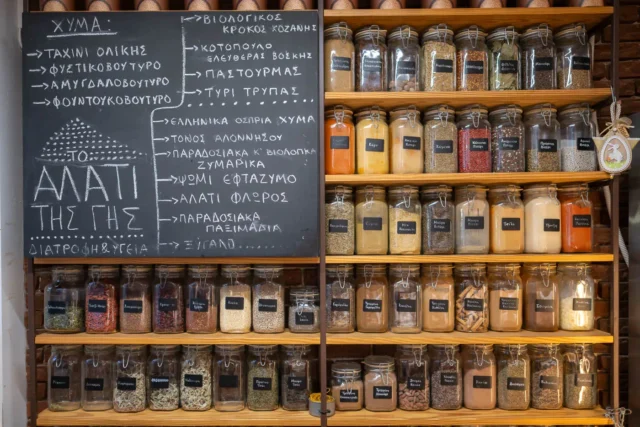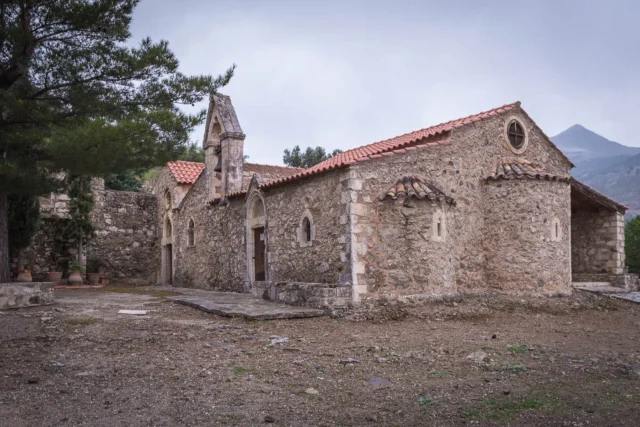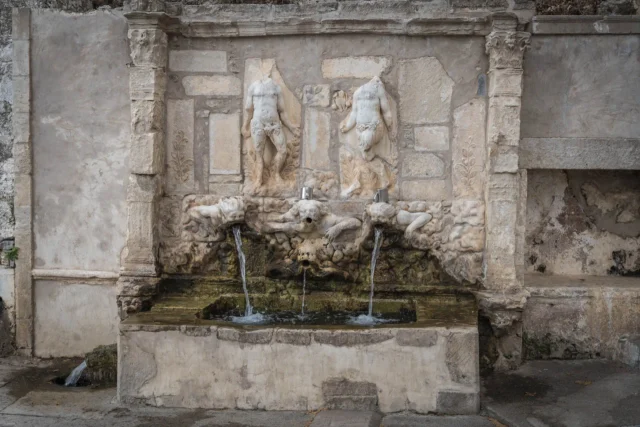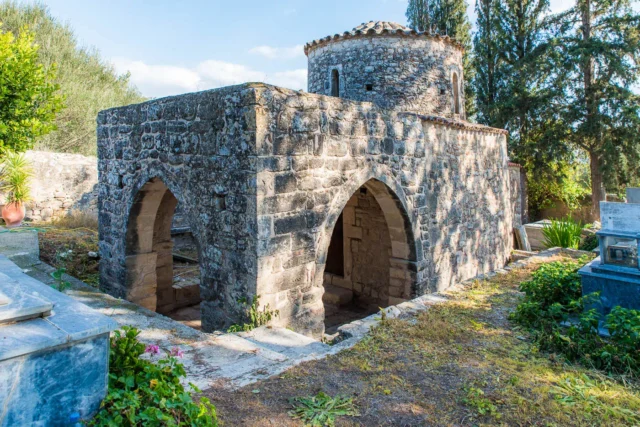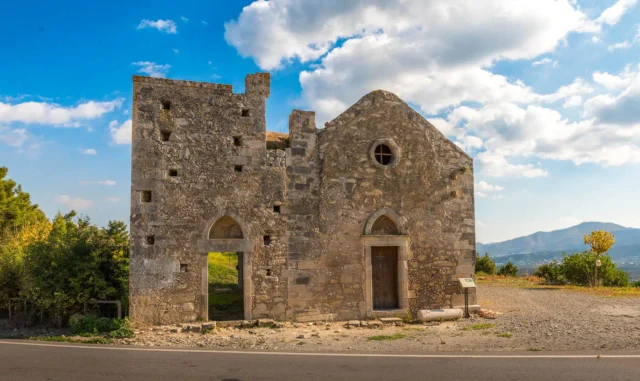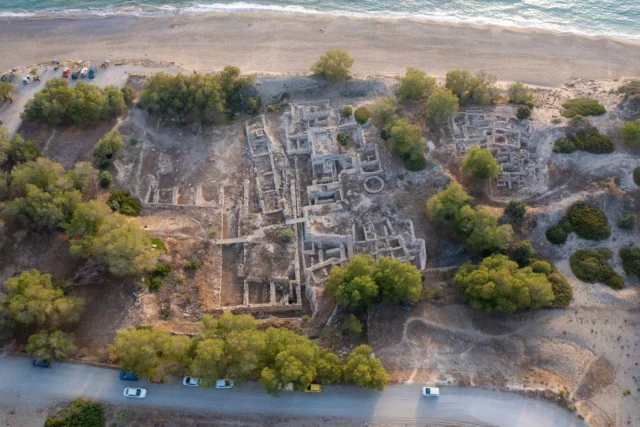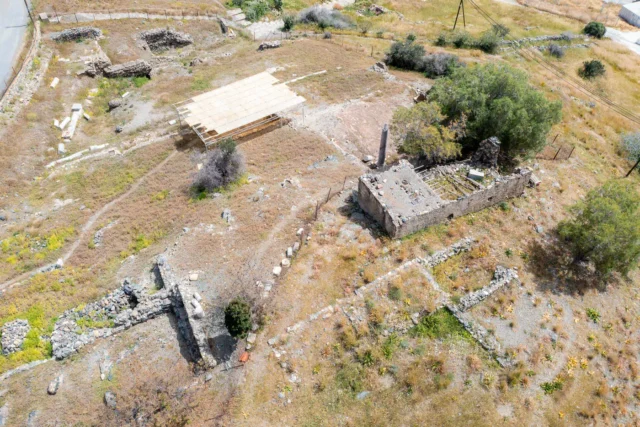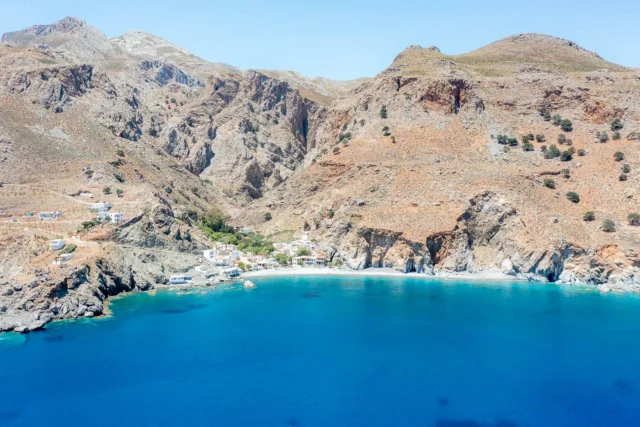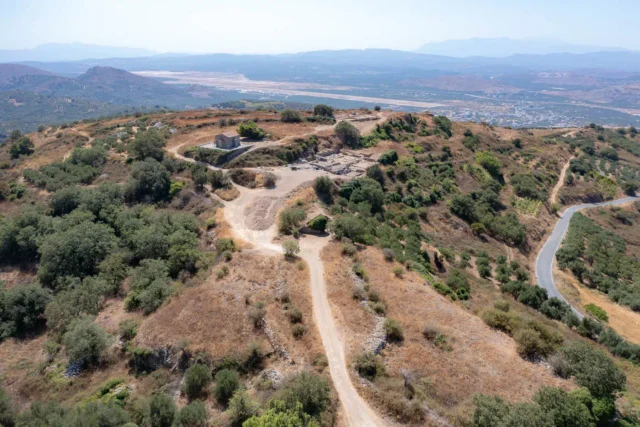415
listings found
Categories
Active filters:
Epano Archanes archaeological museum
Established in 1993 within a neoclassical building in Archanes' Tzami district, the collection presents artifacts unearthed locally, including from the significant Minoan palace site. It features ceramic and stone vases, tools, and figurines illustrating Minoan daily life, customs, and art. A notable exhibit reconstructs a Minoan cemetery with replicas of ossuaries and burial goods. Copies of major finds like frescoes and jewelry, secured in the Heraklion Archaeological Museum, are also displayed. It offers context for the Archanes area's rich history.
Venetian Aqueduct of Morossini
The Venetian Aqueduct of Morossini, nestled in the Karydaki Gorge on the island of Crete, stands as an enduring testament to Venetian engineering prowess and ingenuity. This magnificent structure, spanning […]
Anemospilia
Anemospilia, a Minoan archaeological site on Mount Juktas in Crete, offers a unique glimpse into Minoan religious practices and beliefs. Discovered in 1979, the site features a rectangular building with four rooms, destroyed by an earthquake in the 17th century BC. The eastern chamber contains remnants of a stepped altar with offerings, fragments of pithoi with traces of food, and reconstructed vessels depicting religious ceremonies. The vestibule housed a crushed skeleton and numerous vessels. The central chamber contains a stone altar, believed to be the base of a life-sized wooden statue, with traces of vessels and a box containing a piece of rock symbolizing the earth. The western chamber contained three skeletons, including a young man found on a platform with a decorated knife, leading to interpretations of human sacrifice.
The Minoan villa at Vathypetro
The Vathypetro Minoan Villa, located near Archanes, Crete, reveals insights into elite Minoan life and economic activities during the Late Minoan IA and IB periods (1600-1425 BC).
Initially a residential complex with palatial features like reception halls and a tripartite shrine, it later evolved into an industrial hub with olive presses, workshops for pottery, wine, and textiles, and storage areas. Architectural details include pier-and-door partitions, columns, and a shrine aligned with equinoxes, suggesting ritual and agricultural connections. The villa’s strategic location on a Minoan route from Knossos to the Messara plain and evidence of Linear A documents highlight its administrative and economic significance. The site offers a glimpse into the sophisticated organization and resourcefulness of Minoan society.
Castel del Corner
The Castello del Corner, or Fortress of Kornaron, stands on Kastellos hill near Katalagari, Crete. Tradition attributes its construction to Nikephoros Phokas in 961 AD, following the Arab expulsion. During Venetian rule, it served as a fiefdom for the Corner family, linked to the famed poet Vitsentzos Kornaros. The rectangular fortress, with a 5.5-meter high wall, spans approximately 50 acres, and features Minoan-era wine presses and the church of Zoodochos Pigi. Ruins include wall remnants and possible cisterns, reflecting its role in Malvasia wine production. Restoration efforts have stabilized parts of the perimeter wall.
Panagia Kardiotissa in Agios Thomas
Panagia Kera Kardiotissa, a 14th-century Byzantine monastery near Agios Thomas in Crete, is dedicated to the Nativity of the Virgin Mary. Located in a lush landscape at an altitude of 630 meters, the monastery is situated in a place called Mouzouras, next to the Axedianos River. The monastery once housed a miraculous icon of Panagia Kardiotissa, depicting the Virgin Mary holding Christ. The icon's origins are debated, with some attributing it to an Armenian monk named Lazarus and others to the Heraklion painter Andreas Ritzos. The icon's miraculous powers were documented as early as 1415. The monastery became a significant pilgrimage site in 1912 following a vision of the icon of Saint George. It served as a nunnery from 1935 to 1962 and sheltered residents during the German occupation. Today, the renovated site features a centuries-old oak tree, peacocks, and a workshop for traditional weaving.
Melissa Fortress
Melissa Fortress, near Agios Thomas, Crete, offers panoramic views of valleys. Built in the 11th century during the Byzantine Komnenian period, it controlled strategic routes. The site features a central tower-like structure, perimeter walls, and the well-preserved Zoodochos Pigi chapel, possibly a former monastery. The ruins indicate a pentagonal layout, with a small settlement, Melissa, existing nearby. Historical records note its presence in Venetian and Turkish documents, though it was not utilized or maintained by the Venetians, leading to its abandonment. The ruins reveal a glimpse into Byzantine era fortifications and regional control.
Timios Stavros in Vorizia
Byzantine church near Varsamonero Monastery, Crete, with 14th-century frescoes and intricate stonework. Active place of worship with annual feast day celebrations.
Castel Nuovo (Kasteli Messara)
Castel Nuovo, a 1206 Genoese fortress, stands in ruins on Psilo Kasteli, near Phaistos, Crete. Constructed by Enrico Pescatore, its strategic hill location offered views of Messara. Built on the ancient Aina site, it played a role in Cretan revolts against Venetian rule, including the Two Syvritos (1230-1236) and Kallergis (1363-1367) revolts. The fortress, also briefly reoccupied during the Cretan War (1645-1669), is the namesake of Kainourgiou province. Today, wall and cistern remnants mark the historical landmark, offering insights into Venetian-era Crete.
Valsamonero monastery (Aghios Fanourios)
Explore the historic Varsamonero Monastery in Crete, known for its well-preserved 14th-15th century frescoes and connection to Saint Phanourios.
Vrontisi monastery
Moni Vrontisiou, a historic monastery in the Psiloritis Mountains of Crete, dates back to the 9th century. Dedicated to Saint Anthony and the Touching of Thomas, it is known for its architecture and frescoes. The monastery played a role in the Cretan struggle for independence, serving as a refuge for monks and a hub for revolutionary activities. Its fortified walls, two-story main building, and bell tower stand as a testament to its history. The 15th-century marble fountain at the entrance is a highlight, featuring intricate carvings. The main church houses surviving frescoes from the 14th century. Moni Vrontisiou is located 49 kilometers southwest of Heraklion and is open daily from 8:00 AM to 5:00 PM with free admission.
Aghios Pavlos (Saint Paul)
The Church of Saint Paul, a 13th-century Byzantine church near Kamilari, Crete, features a large narthex and frescoes.
Aghios Georgios Falandras
Venetian-era monastery destroyed in 1821. Its history intertwines with Crete's religious traditions and fight for Greek independence.
Kommos archaeological site
Located on Crete's south coast, this site was a major Minoan harbor town for Phaistos and later a Greek sanctuary. It features monumental Minoan structures like Building T, shipsheds (Building P), and the significant residence House X. During the Greek and Roman periods, successive temples (A, B, C) were built over Minoan ruins. Finds of imported pottery from Egypt and Cyprus confirm its role as a trade hub. Abandoned in the Roman era, it is now a protected archaeological site.
Nefeleonas social cooperative
Nefeleonas Co-op is a social cooperative based in Heraklion, Crete, Greece. They develop a variety of social economy projects in both Heraklion and Athens. Some of their areas of focus […]
Lebena (Leveen)
Lebena, an ancient city on Crete's southern coast, is renowned for its Sanctuary of Asclepius, the Greek god of medicine. The city's strategic location near a good harbor and its association with the healing cult of Asclepius made it an important center for both trade and religious pilgrimage. Lebena was also a significant port for trade and commerce with the East during the Prepalatial period. The site of Lebena has a long history of occupation, with evidence of inhabitation dating back to the Neolithic and Early Minoan periods (ca. 3rd millennium BC). The presence of a variety of Eastern imports in secure Prepalatial contexts at Lebena, including faience, gold, ivory, and Egyptian scarabs, suggests that Lebena was a significant port for trade and commerce with the East during this time. In the Late Classical period (ca. 4th century BC), the Gortynians established the sanctuary dedicated to Asclepius at the harbor. The city was destroyed by a powerful earthquake in 46 BC but was subsequently rebuilt. The sanctuary continued to flourish throughout the Roman period, as evidenced by the numerous inscriptions and archaeological finds from the site. The strategic location of Lebena on the south coast of Crete made it an ideal location for a port. The sheltered bay would have provided a safe harbor for ships, and the proximity to the Asterousia Mountains would have offered protection from storms. Additionally, Lebena's location on the south coast would have made it a convenient stopping point for ships traveling between the Aegean and the Near East. The presence of Eastern imports at Lebena suggests that the site was an important point of contact between Crete and the East during the Prepalatial period.
Ancient Lyktos (or Lyttos)
Lyttos, once known as Lyktos, is an ancient city steeped in history, with possible roots in the Minoan civilization. Archaeological evidence suggests a vibrant past, with the city flourishing through the Mycenaean, Archaic, Classical, Hellenistic, and Roman periods. The city's strategic location and powerful alliances contributed to its prominence in Crete. Excavations have revealed significant structures, including fortifications, public buildings, and residential areas, offering a glimpse into Lyttos' rich cultural heritage.









